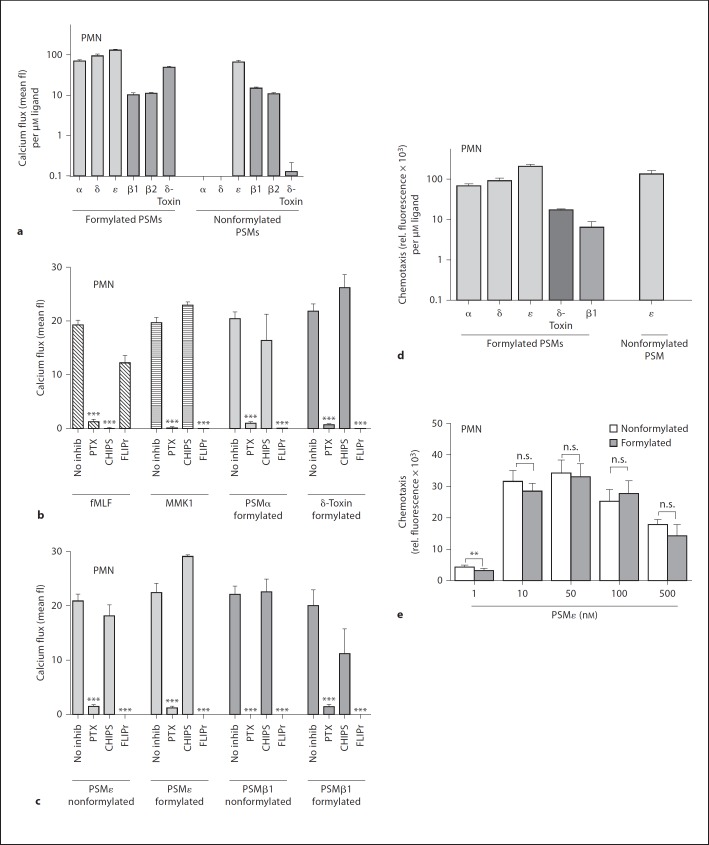Fig. 1.
S. epidermidis PSM peptides induce chemotaxis and calcium ion fluxes in human neutrophils. a Formylated PSMs and nonformylated PSMε, PSMβ1 and PSMβ2 induce Ca2+ flux in human neutrophils (values normalized to 1 μM). b, c Neutrophil stimulation by PSMs (formylated PSMα 300 nM, PSMδ 200 nM, δ-toxin 500 nM, and PSMε 200 nM, formylated and nonformylated PSMβ1 1.5 μM, PSMβ2 1.8 μM and nonformylated PSMε 300 nM) is sensitive to PTX and the FPR2/ALX-specific inhibitor FLIPr, but not the FPR1-specific inhibitor CHIPS. fMLF (10 nM) and MMK1 (20 nM) are synthetic control ligands of FPR1 and FPR2/ALX, respectively. d Formylated PSMα (250 nm), PSMδ (250 nm), PSMε (100 nm), δ-toxin (1 μm) and nonformylated PSMε (100 nm) induce chemotaxis in human neutrophils. e Formylated and nonformylated PSMε stimulates chemotaxis in human neutrophils at nanomolar concentrations with a typical bell-shaped dose-response curve. Data represent means ± SEM of 3 independent experiments. * p < 0.05; ** p < 0.005; *** p < 0.001 versus no inhibition (b, c). a–c All values were significant versus buffer control in (a). δ = δ-Toxin; fl = fluorescence; inhib = inhibitor; n.s. = not significant.

